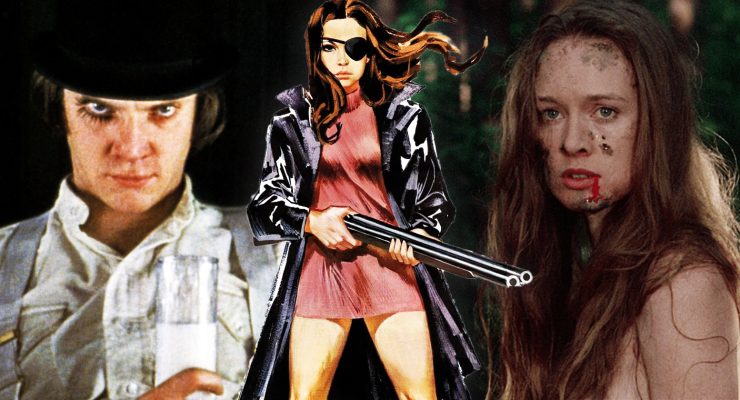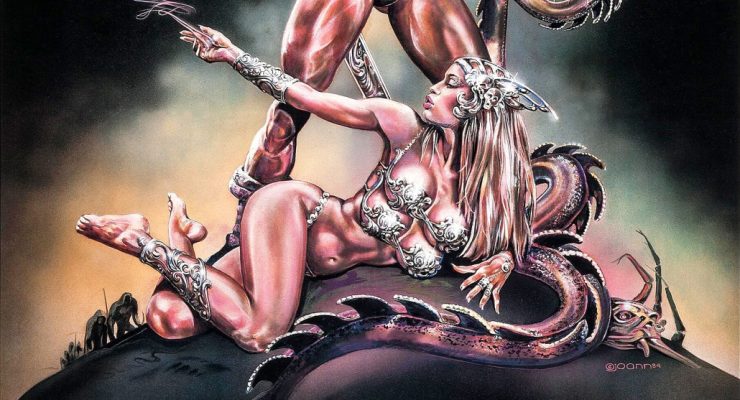Trance, 2013.
Directed by Danny Boyle.
Starring James McAvoy, Vincent Cassel, Rosario Dawson, Danny Sapani and Matt Cross.
SYNOPSIS:
An art auctioneer who has become mixed up with a group of criminals partners with a hypnotherapist in order to recover a lost painting.
Danny Boyle’s latest flick, the mind-bending crime thriller Trance is a mixed bag. While it sports some strong performances, fascinating visuals and perfectly chosen music (all emblematic of Boyle’s signature style) at its core it is unengaging, clichéd and frustrating. I might even go so far as to say it is a textbook example of style over substance.
Not that style over substance is necessarily bad, if the style in and of itself is well done, interesting and charismatic. A film without style can come across as boring or hard to watch, and that’s certainly not true of Trance.
Set in London, Trance is about art auctioneer Simon (James McAvoy; X-Men: First Class), a debt-ridden gambling addict who gets involved with a gang of criminals to steal a painting worth millions. The crime goes awry, with Simon taking a knock to the head that makes him forget where he stashed the painting. Gang leader Franck (Vincent Cassel; Black Swan) does not take this as a good enough excuse, and enlists a hypnotherapist called Elizabeth Lamb (Rosario Dawson; Unstoppable) to help break down the walls in Simon’s mind blocking his memories. However, what she does unlock has destructive consequences for all.
The central premise is good. Boyle is adept at telling stories about crime and criminals, and the hypnotherapy angle introduces dreamy cinematography and a twist-filled narrative: as we get to see what happens in Simon and the other character’s minds, it becomes difficult to tell fact from fiction. This unusual form of film narrative may remind audiences of great films like eXistenZ, Inception, and Eternal Sunshine of the Spotless Mind.
Yet herein lays the rub. As the character’s lose grip on reality, so too does the film. The narrative becomes one about falsity, lies and illusion, and plays a few tricks on the audience, which is okay, but it can distract and disengage the audience. As we begin to realise we cannot trust the film, we lose our interest in it and the characters. Why should I care about a scene when I am not sure it is really happening?
Much like how the end of Inception made us question what was real, what was a dream, etc. Trance raises similar questions: Did that happen? Is it all in Simon’s head? Is it all an illusion crafted by Rosario Dawson’s character? One could even argue that none of the film is real after Simon’s initial blow to the head, but instead a coma-induced dream or the creation of a mind in the seconds before death (like 2005’s Stay).
Of course, Boyle offers no easy answers to these riddles, and the narrative is purposefully opaque: scenes taking place at different times featuring the same characters are intercut, while images and motifs seen in dreams appear later in reality, further obfuscating the truth.
Like Inception, it doesn’t really matter if the events in the story are real or not, only that the film is interesting enough to raise these questions. It is also refreshing to see a film so densely and cleverly interconnected through lines of dialogue and visual cues so that the true meaning of a scene or image is only clear or explained later on, and that a lot of this is left to the audience to tie together.
However, no amount of clever story-telling can help if we do not connect with or like the characters. While the three main actors give good performances, their characters are not particularly deep or interesting. The other members of the Franck’s gang amount to little more than walking plot devices, cannon fodder and comic relief. After a “dark reveal” in the third act completely changes our perspective on one of the central characters, the film loses its most sympathetic character (which isn’t saying much) leaving the film floundering in its final scenes, as the audience no longer has anyone to root for. Perhaps it is just me, but the “dark reveal” combined with the loose “this may be a dream so there are no consequences” narrative left me unengaged and uninterested in the film’s resolution.
Furthermore, the more engaging and inventive parts of the script are marred by clichéd moments: a man and woman shout at each other, and then fall into bed; the only female character has to appear fully naked to advance the plot; a character is violent towards a woman, so now they must die. Not only that, but the film may get a little too far-fetched and ridiculous for some people and might raise a few eye-brows. Chief amongst these is the assumptions the film has about the power of hypnotherapy i.e. I don’t think real life hypnotherapy works like that.
Still, there is action involving guns, imaginatively gory moments, an attractive (and occasionally naked) cast, and stunning shots of locations around London, all washed in vivid light and colours and set to a brilliant soundtrack.
Overall, a well-made film that is great to look at and listen to, just lacking in soul and any deeper meaning. Is it not as clever as it thinks it is? Perhaps. Then again, maybe that’s fair enough: Danny Boyle was working on the film alongside putting together the 2012 Opening Ceremony, so I can forgive him for making something altogether more light-hearted, easier and entertaining.
Flickering Myth Rating – Film: ★ ★ / Movie: ★ ★ ★ ★
Luke Graham is a writer and works in newspaper production. If you enjoyed this review, follow him @LukeWGraham and check out his blog here.










